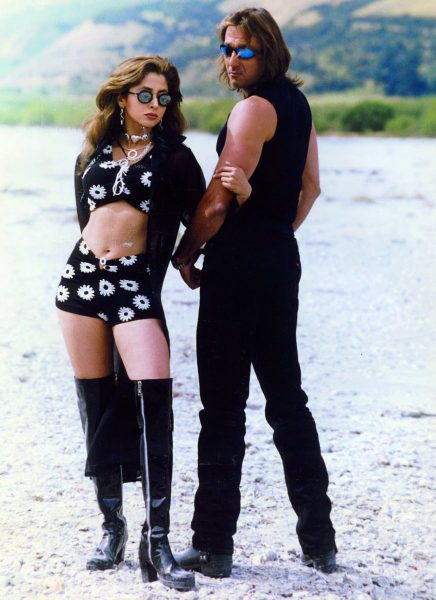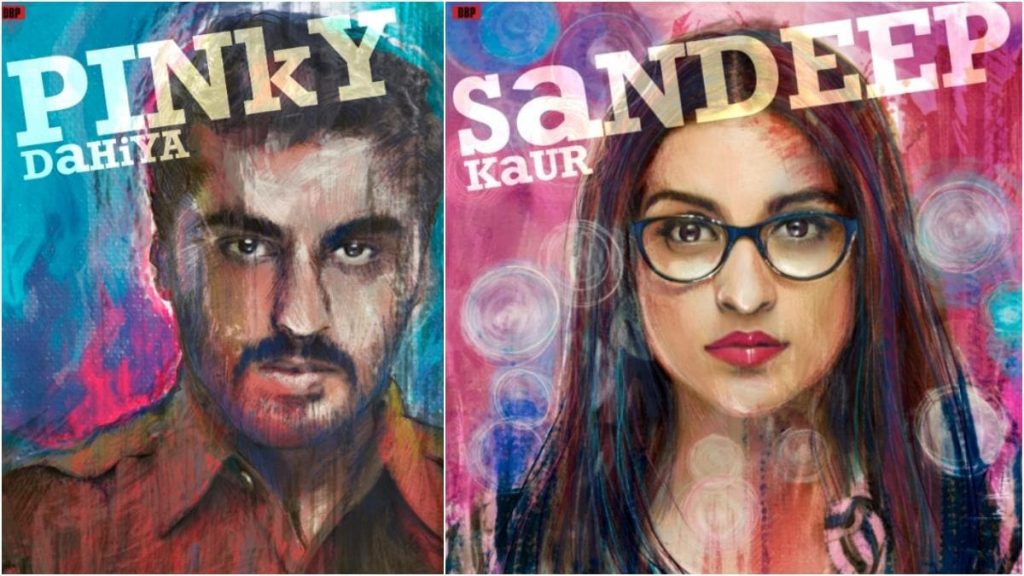Oscar Wilde was notorious in his time for several reasons, but particularly his sexuality (for which he was imprisoned), his wit, and his views on the purpose of art. The preface that Wilde wrote for his novel The Picture of Dorian Gray (1890) became a manifesto for the art-for-art’s-sake movement. In just a page and a half, Wilde puts forth an entire philosophy about how art ought to be created and interpreted. Using his trademark aphoristic style and humor, Wilde dispenses one quotable quote after the other, especially the last line, ‘All art is quite useless’.
The world of Hindi cinema has become intensely ‘useful’ nowadays. Pagglait (2021) alerts its audience to the plight of widows in our society. Sherni (2021) ticks several boxes in one go: not only do we learn about what it’s like to be a female sarkari afsar (government officer), but we are also taught about forest conservation as the characters are in pursuit of a female tiger who is wreaking havoc in local communities. ‘No artist desires to prove anything’, wrote Wilde, but these filmmakers have much to prove. Mimi (2021) promises to de-stigmatize surrogacy, for instance. For Wilde, there was ‘no such thing as a moral or an immoral book. Books are well written, or badly written. That is all’. For the artist and for the audience, the craft ought to supersede morality. In this spate of agenda-based films that tackle one social evil after the other (see Akshay Kumar’s filmography over the past few years for more examples), filmmaking takes a back-seat and morality is foregrounded. Wilde says that ‘[w]e can forgive a man for making a useful thing as long as he does not admire it. The only excuse for making a useless thing is that one admires it intensely’. Contemporary Hindi filmmakers are all admiration for their own moral compasses. Dibakar Banerjee’s latest film, Sandeep Aur Pinky Faraar (2021) is no exception to this trend of self-righteous films. If Banerjee’s is a ‘useful’ work of art, Ram Gopal Varma’s Daud (1997) could be considered ‘useless’.
Banerjee and Varma’s films have a few elements in common – a prolonged chase, the reversal of male and female names, and a paradoxically menacing character called ‘Pinky’. Daud begins with news of a nuclear bomb falling into the hands of a group of dissidents led by Pinky, an anarchic and darkly comical character played by Paresh Rawal. He hires a middleman to deliver the bomb to him and the middleman entrusts Sanjay Dutt’s character with the job. After many confrontations and negotiations gone wrong, Dutt and Urmila Matondkar’s characters are thrown together as they make a run for it with the box, believing it to be filled with gold. Thus, begins the chase. Strangers to each other, the two protagonists introduce themselves using gender-reversal aliases: Matondkar adopts the name Daya Shankar, Dutt chooses Uma Parvati. The film chronicles Daya and Uma’s adventures on the run, including Daya and Uma’s stint in the jungle with Chakoji, who rules a small village in the middle of the wilderness and is played with inimitable charm and comic timing by Neeraj Vora. All is well in the end, with Daya and Uma walking off into the sunset together, none the richer, but slightly wiser.
Sandeep Aur Pinky Faraar follows a similar trajectory. A head-honcho at Parivartan Bank, Sandeep Kaur (Parineeti Chopra) is scheduled to meet her boss at a bar, but, instead, she is met by Pinky (Arjun Kapoor) and a hand-written note asking her to accompany Pinky in his car. A suspended Haryana police officer, Pinky quickly realizes that he has been set up by his superior: Sandeep, pregnant with her boss’s baby, was to be shot that night in that car; Pinky would be collateral damage. Having narrowly escaped their fates, Sandeep and Pinky must flee from the country. While Uma and Daya had had an absurd caper in the jungle with Chakoji, Sandeep and Pinky pretend to be married to take shelter in the home of a middle-aged couple in a small town near the Nepal border. This couple has invested their life’s savings into a scheme that was Sandeep’s brainchild, created to dupe investors. To wash off the sins of her past life, Sandeep is compelled to help. The local branch’s manager takes advantage of Sandeep’s precarious physical, professional, and personal position, the two have a scuffle, and blood appears on her trousers. Pinky ensures that Sandeep recovers from the miscarriage and facilitates their escape to Nepal. But Sandeep chooses to face the consequences of her actions by coming clean about the fraudulent scheme. The film draws to a close with Pinky dancing in drag as he crosses a bridge and the Indian border. Sandeep is seen cheerfully waltzing through jail, liberated in her captivity.
Uma and Daya first meet when Daya is in a hotel lobby. A group of drunken men are harassing her. In characteristic Bollywood hero fashion, Uma arrives to save the day. He chases them away and, when he turns to Daya triumphantly, she says, ‘Tum Nahin Bhi Aate Toh Main Manage Kar Leti, Apne Aap Ko “hero” Mat Samajhna’ (Even if you hadn’t come, I would have managed. Don’t think you are a hero). Later, when Daya rescues Uma from a sticky situation, he repeats her words and assures her that she is not a ‘heroine’. Uma and Daya alternate between being the ‘damsel-in-distress’ and the ‘knight-in-shining-armor’, irrespective of their genders. Differences in gender are not a burden, but a strength. That is not to say that Varma lets the audience forget about Matondkar’s femininity and Dutt’s masculinity. In Daud, the camera lingers on Matondkar’s body as she confidently struts down city streets, a village, or the forest in her well-fitted blue jeans and high-heeled boots. The songs in the film are akin to sexual fantasies. There is no denying the filmmaker’s male gaze. Dutt is not exempt from being objectified either. For most of the film, he is in a strategically torn t-shirt that accentuates his large frame and muscular body. Dutt’s ultra-masculine, rugged physique comes in handy while confronting one villain after the other; in song sequences, he is utterly convincing when he nonchalantly carries Matondkar on his shoulder. There is a frisson of attraction between them and, when Uma misinterprets a moment and moves towards Daya to kiss her, she rebuffs him angrily. The awkwardness lifts when Uma sincerely apologizes and Daya forgives him. The two are promptly back to being partners-in-crime. Their gender roles are apparent, but subtly subverted, too. Daya is aware of her effect on men and she wields this power well. There is no situation from which she cannot manage to emerge triumphant. Daya’s feminine wiles invariably succeed where Uma’s brawn fails. Unlike Banerjee’s Pinky, lumbered with his manliness, Uma’s caveman-like masculinity becomes a source of comic relief rather than heroism.

In Banerjee’s film, differences in gender are constantly foregrounded. Sandeep carries her pregnancy report with her in her handbag and brandishes it like a passport. Despite his colorful name and penchant for dancing, Pinky is weighed down by his surly masculinity, frequently expressed through physical violence. Sandeep bears the brunt of this violence: we see him choke her in a prolonged sequence early in the film; later, we see him slap her, too. Perhaps her report really is her passport – It is only her pregnancy that deters him from fully venting his rage, as Pinky says. When Sandeep suffers a miscarriage, Pinky awakens to her suffering and tends to her patiently, but his sympathy is roused by a tragedy that is unique to the female sex, not by their shared humanity. Sandeep and Pinky achieve an uneasy truce that reaches its apex minutes before they part. Pinky is clad in pink from head-to-toe, disguised as a female dancer, with make-up and a long braid, ready to join the baraat that will take him across the border. Sandeep and Pinky are at last able to touch each other with tenderness. She grasps his hand, the camera focuses on their fingers grazing each other, as they say goodbye not with words, but a meaningful look. Banerjee implies that a connection between the two solidified only when Pinky adopted the outward appearance of a woman. These heavy-handed reminders of the gulf that separates men and women are like anchors pulling the film, its characters, and the audience down. Daya and Uma, too, contend with the baggage that comes with their genders, but Varma makes them toss it around like a beach ball.
Blood has become a common trope in ‘feminist’ films. Bulbbul, a 2020 film about a wronged woman avenging herself as a chudail (witch), includes an excruciatingly long rape scene with the female protagonist in bed with her legs up in crutches – the assault leaves her legs in a bloody ruin (her legs are in crutches due to another long, sexualized scene in slow-motion in which she is beaten with an iron rod by her husband). Forget Me Not, from the anthology Ray (2021), revolves around a man losing his memory due to a series of pranks by a spurned mistress seeking closure; the mistress terminates a pregnancy and inexplicably asks the doctor to show her the aborted foetus, which the audience sees, too, in a gruesome close-up. In Sandeep Aur Pinky Faraar, wherein Sandeep has her come-uppance against her callous boss/boyfriend, the first shot that we see after Sandeep’s miscarriage is of her bare, bloodied legs being cleaned by Pinky. Why subject female characters to such incredible physical and emotional trauma? When does realism become sadism? Why must a woman’s suffering always stem from her body? Simone de Beauvoir, in The Second Sex (1949), proclaimed that ‘one is not born, but rather becomes, a woman’. She made the radical claim that our gender is not biological, but a by-product of our culture. Over half a century later, we are still fixated on female anatomy. Must a woman’s body always be entrenched in pain? My enduring memory of Matondkar’s body in Daud is her blue-jeans and black-boot clad leg rising to kick a man in his face.
In Republic (c. 370 BC), Plato proposed a nation in which all forms of art would either be banished or heavily censored. Art tells us lies. It is fictional, yet it misleads its consumers to believe what they are experiencing to be true. And thus began the endeavor to imbue art with a raison d’etre. Plato’s own student, Aristotle, was the first to challenge his teacher’s philosophy. In Poetics (c. 330 BC), Aristotle argues that art may be a lie, it may imitate reality, but the emotions that it inspires are true. To experience catharsis is to experience a cleansing of one’s sentiments through a work of art. While watching the sitcom Schitt’s Creek (2015-2020), we inhabit a fictional town in which homophobia is a non-issue. Most protagonists have fluid sexual orientations that never raise any eyebrows. This is far from realistic, but it allows us to vicariously experience a life that is free from discrimination. Legitimate, useful, and ‘realistic’ art is a wooden ruler with which the audience’s knuckles are struck. No wonder Wilde, who could have used art as a vehicle to voice his views on society’s rejection of his sexuality, insisted that all art is quite useless. May it remain so.
Megha Agarwal completed her PhD in Comparative Literature at Goldsmiths, University of London in 2018. Since then, she has continued to study Literature and teach it, too. Her research interests include intertextuality and the practice of reading comparatively.


